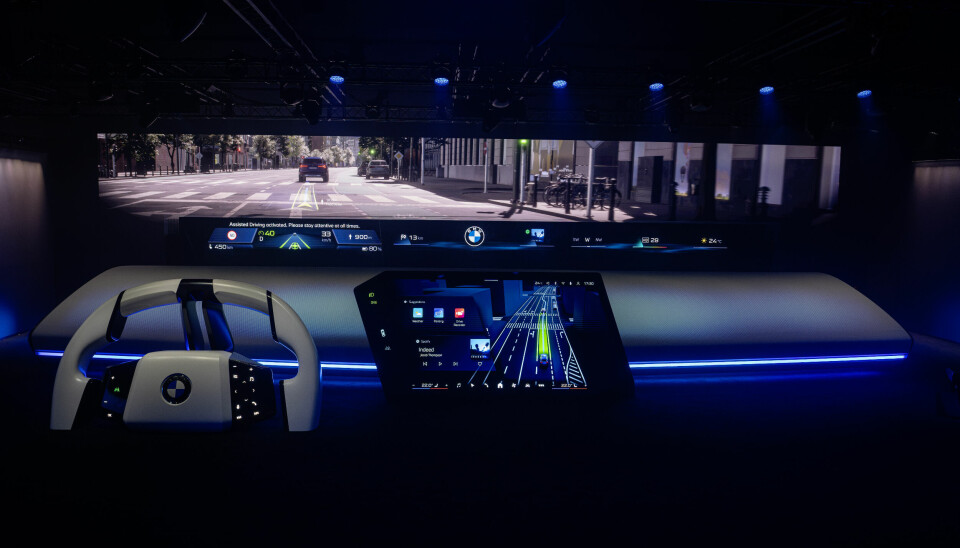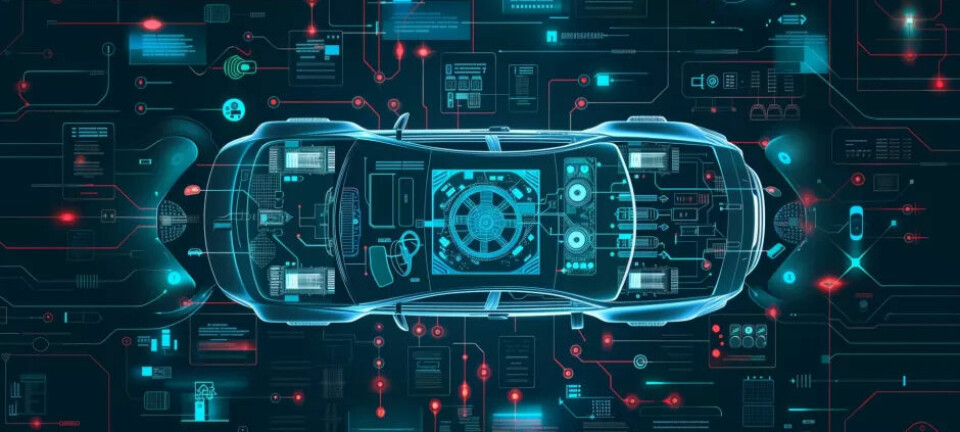Operating System X
New Perspectives for BMW Drivers

A quarter-century after the iDrive, BMW is initiating the next revolution in the cockpit and introducing a new user interface with the Neue Klasse. Development chief Frank Weber aims to open the eyes of not only customers but also the competition.
As long as the ignition is off, the view is still empty, but as soon as the Neue Klasse awakens, the eyes of the BMW driver of tomorrow will be opened: With the start of the new model family, which will debut at the end of 2025 and the beginning of 2026 with an iX3 and an i3, the conventional cockpit is finally history. A narrow strip under the windshield becomes the central display instrument across the full width and opens up completely new perspectives for all passengers. Development chief Frank Weber calls the system "Panoramic iDrive" and classifies it as a similarly large revolution as the first iDrive for the Seven Series 25 years ago, where one could suddenly toggle through ever-lengthening lists with a rotary knob on the center tunnel and confirm their selection with a press.
What the car will eventually look like, in which these new insights and outlooks are to be offered, BMW has still not revealed and is saving this aha moment for the home game at the IAA in September. However, at the CES in Las Vegas, the Bavarians have now shown all the details of the iDrive of the future with an oversized installation.
The bond between car and driver is to become closer
The eye-catcher is the band under the windshield, which is divided into islands with largely individually configurable content. With a swipe of a finger, the so-called widgets can be selected, placed, or moved. And for the first time, personal background photos can now be used. As before, there is a central display with matrix lighting in front of the center console, which, however, moves closer to the driver for less distraction, as well as a new steering wheel. There, structured sensor surfaces with situation-appropriate assignments are to enable all those inputs that the driver does not want to make by voice in dialogue with a new avatar.
And just because now everyone can see something on the windshield, the head-up display for the driver is not passé. On the contrary: it is also being revised, becoming larger, showing new 3D graphics, and allowing the displays for navigation and assistance to merge more closely with the reality in front of the car.
In the end result, the operating system is not only supposed to become an even more deeply integrated part of the car, says Weber, who was himself surprised during the first test drives a few years ago at how much closer the bond between driver and vehicle is experienced. But it is also supposed to enhance safety and, of course, driving pleasure. "Eyes on the Road, hands on the Wheel," they repeat in Munich like a mantra. And this, even though with the Neue Klasse they also want to take the next steps in autonomous driving and push Level 2 further than ever before.
OS X is intended to increase the longevity of all BMWs
The Panoramic iDrive is only one half of the UX revolution; the other is hidden invisibly on the central computer that controls all the digital wizardry. For the first time, the operating system OS X runs on it, which is based on an Android Open Source Project stack and is intended to keep the Neue Klasse as new as possible for as long as possible. This allows not only dozens, possibly hundreds of third-party apps to be integrated seamlessly, but also keeps the Neue Klasse update- and upgrade-capable.
"A quarter of a century after we reinvented car operation with the iDrive, we are now taking the next step," says Weber, promising: This will be included in all models in the future. After its debut in the iX3 and i3, it will therefore soon be retrofitted in the conventionally constructed Fives and Sevens.
“This way, our vehicles not only become smarter and easier to use,” adds design chief Adrian van Hooydonk, attributing increasing importance to digital experiences and sound. “But it also enables much stronger personalization, making every new BMW uniquely yours.”
As much new as the Panoramic iDrive offers, some old things are left behind. Not only are the previous instruments behind the steering wheel being phased out, but the revolution is consuming its children, and the once groundbreaking rotary push controllers, a central innovation of the first iDrive and since then a pivotal point in the operating system of every BMW, will become history. Oh, and gesture control has also proven to be a dead end and will be abolished.
BMW sees itself in League 1 of Digitalization
Although BMW still includes the term "Motor" in its name, so at first glance it may seem a bit surprising that the Bavarians are starting the "Year of the New Class" with bits and bytes instead of kilowatts and newton meters, Weber is "quite okay" with this order. Because firstly, the digital experience has now become inseparably linked to the proverbial joy of driving for him. "One cannot be represented without the other today." And secondly, the CES provides the Bavarians with the right stage to redefine their position in the new automotive world. "That our cars drive quite well, people now believe us," Weber downplays. "But here we can prove that we also play in the first league when it comes to digitalization." And because the old automotive giants have lost a lot of credibility in this discipline due to the new challengers and often self-inflicted problems, this is an important concern for him.
And to all those who are still afraid that Weber and his team prioritized quick operation over rapid acceleration in the development of the Neue Klasse, and that sightlines received more attention than the ideal line, he asks for just a few more weeks of patience. Then the Bavarians will present the second of only four central computers of their new architecture, the superbrain for longitudinal and lateral dynamics. "And we don't call it the Heart of Joy for nothing."
This article was first published at automotiveit.eu



















